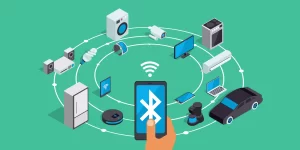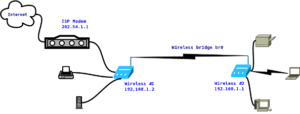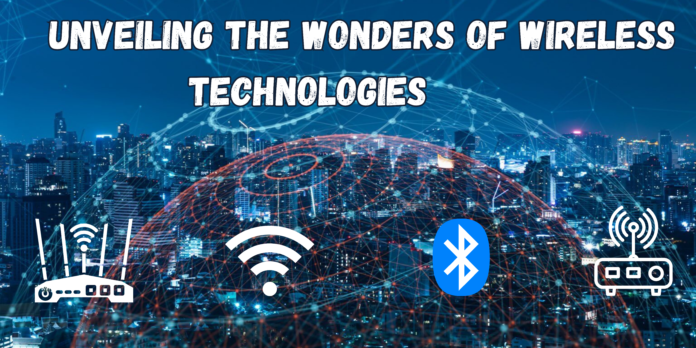Bluetooth, Wi-Fi, and Cellular Networks in Modern Communication System
Wireless technologies have assumed a central role in our linked society, where flawless communication is a need. Wireless technologies like Bluetooth, Wi-Fi, and cellular networks have transformed the way people interact, cooperate, and stay informed, enabling anything from data exchange across devices to mobile internet access. This blog explores the capabilities, uses, and importance of these wireless miracles in contemporary communication networks.
Bluetooth: Connecting the Unseen Threads – In honour of a Danish monarch who lived in the 10th century, Bluetooth technology captures the essence of wireless networking. Bluetooth enables devices to easily converse and share data over short distances using radio waves. Bluetooth was first designed as a way to do away with wired connections, but it has since developed into a flexible technology that powers several applications.

Key Features and Applications: Due to its low power consumption, Bluetooth is perfect for tethering gadgets like fitness trackers, headphones, and keyboards to smartphones and laptops. It is the inspiration behind wireless audio gadgets, which liberate us from clumsy cords to accept calls and enjoy music. The key component of smart home automation is Bluetooth, which enables smartphone control of appliances like lights, thermostats, and others.
Wi-Fi: The Invisible Web of Connectivity – The term “wireless fidelity,” or Wi-Fi, has evolved to stand for wireless internet access. Within a specific range, it offers high-speed connection by using radio frequency signals to transport data between devices and access points. Wi-Fi has revolutionized how we access and exchange information, from our homes and places of work to public areas.

Key Features and Applications: High data transmission rates and widespread use of Wi-Fi have completely changed how we use the internet. It enables us to connect several devices at once, stream videos, engage in video conferences, and surf the web. The Internet of Things (IoT) age has been ushered in by Wi-Fi-enabled “smart” objects like TVs, cameras, and appliances that allow for remote monitoring and control.
Cellular Networks: Bridging Continents Wirelessly – The apex of wireless communication, cellular networks enable us to maintain connections across great distances. These networks maintain connectivity even while moving by using a grid of cell towers to send signals between mobile devices.

Key Features and Applications: High-speed internet services, text messaging, and phone calls are all offered via cellular networks. From 2G (second generation) through 5G (fifth generation), they have advanced, with each generation bringing greater data rates and lower latency. The foundation of mobile internet access is cellular technology, which allows us to access information, social media, and online services from any location. In sectors like transportation, healthcare, and emergency services, it is crucial.
Synergy and Interconnectivity: While each wireless technology has distinct advantages of their own, they frequently complement one another to improve our communication. Bluetooth headphones, for instance, operate with smartphones that connect to the internet through Wi-Fi or cellular networks. These technologies work in harmony to provide a seamless network of connectedness that improves our daily life.
Our relationships with information, services, and other people have changed as a result of the victorious development of wireless technologies like Bluetooth, Wi-Fi, and cellular networks. These technologies have gone beyond the limitations of conventional communication, from streaming music wirelessly to participating in video conferences with colleagues around the world. We can anticipate these wireless wonders evolving as technology develops.









